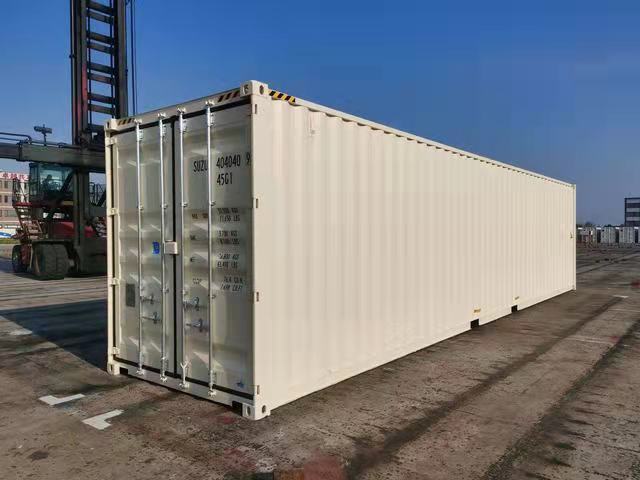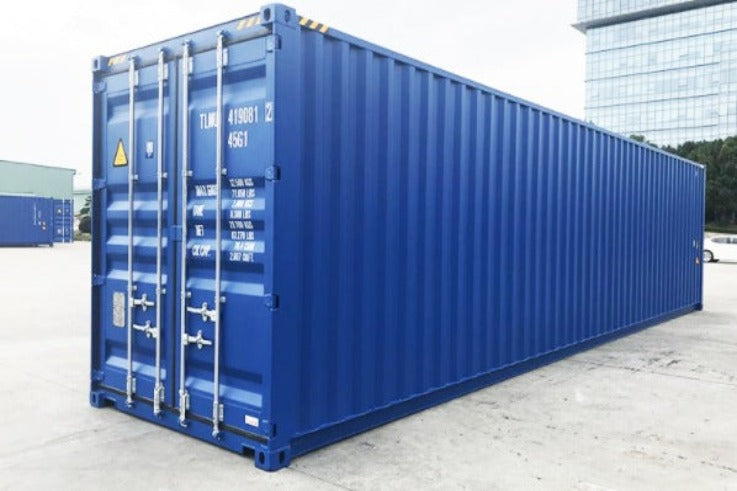The Ultimate Guide to Choosing the Right Shipping Container for Your Needs
When it pertains to choosing the appropriate delivery container, recognizing your details demands is important. You'll wish to consider variables like size, kind, and product to assure you make the most effective choice. From standard sizes to specialized alternatives, there's a whole lot to check out. Plus, budgeting for both the container and any type of modifications can make a large distinction. Let's break down the vital facets to aid you locate the excellent fit for your needs.
Understanding Shipping Container Sizes
When you're selecting a delivery container, understanding the different sizes available is vital for making the ideal choice. Shipping containers normally are available in conventional sizes of 20 and 40 feet, yet you'll likewise discover various other dimensions. Recognizing the dimension you need depends on what you plan to store or transport.If you're moving smaller products, a 20-foot container may be perfect, while bigger shipments typically require a 40-foot container. The height can additionally differ; high cube containers provide extra vertical space, which can be beneficial for taller goods.Before deciding, gauge your freight, and think about how much room you'll require for packing and unloading. Always consider potential future demands-- selecting a somewhat bigger container may conserve you problem down the line. Inevitably, choosing the appropriate dimension will certainly enhance efficiency and guarantee your products are protected during transportation
Kinds Of Delivery Containers Available
There are numerous sorts of shipping containers readily available, each made for details purposes and cargo needs. The basic dry container is versatile, excellent for general freight. If you're shipping subject to spoiling products, consider a refrigerated container, which keeps a controlled temperature level. For oversized things, high dice containers supply additional elevation, fitting taller loads.If you need to carry heavy machinery or equipment, level rack containers offer a tough base without walls. Open-top containers enable for very easy loading of high cargo, with a detachable tarp covering for defense. If you're searching for adaptability, consider a collapsible container that can be conveniently saved when not in use.Lastly, specialized containers like tank containers are utilized for fluids, while vented containers are designed for bulk cargo that requires air flow. Recognizing your cargo type will assist you pick the right container to meet your shipping requires effectively.
Product Factors To Consider for Sturdiness
When choosing a delivery container, the product plays an essential duty in its resilience. You'll intend to evaluate the advantages of steel versus light weight aluminum, particularly pertaining to deterioration resistance. Understanding these elements can aid you make a more informed choice for your delivery needs.
Steel vs. Light weight aluminum Containers
Exactly how do you choose between steel and aluminum containers for your delivery requires? Begin by thinking about toughness. Steel containers are durable and offer outstanding stamina, making them perfect for heavy loads and severe problems. They stand up to damages from effects and are frequently more economical, which can be a significant factor for budget-conscious buyers.On the various other hand, light weight aluminum containers are lightweight, which can conserve you on delivery costs. They're simpler to navigate and are a terrific option if you need to transport goods often. Light weight aluminum is normally more pricey and much less robust than steel. Consider your particular needs meticulously, including weight, expense, and the sort of freight you'll be shipping, to make the appropriate selection for your circumstance.
Deterioration Resistance Variables
Picking the right material does not simply entail weight and expense; deterioration resistance plays a considerable role in durability. When picking a shipping container, take into consideration the environment it'll encounter. Steel containers, while strong, can corrosion otherwise appropriately dealt with. Search for alternatives with protective finishes or galvanization to enhance their life-span. Aluminum, on the various other hand, provides all-natural corrosion resistance, making it suitable for coastal locations or moist conditions. It can be extra expensive. Additionally, examine the container's usage-- if it'll be subjected to chemicals or rough weather, prioritize products that can hold up against these he said conditions. Buying a corrosion-resistant container now can conserve you from pricey repairs or replacements down the line. Select intelligently for long-term benefits.
Alterations and Modification Options
Delivering containers aren't simply for moving items; they can be changed to satisfy your certain requirements through various modifications and customization alternatives. You can transform a common container right into a comfortable office, a temporary retail store, or perhaps a personal gym. The possibilities are virtually endless.Think concerning including windows, insulation, or ventilation to boost convenience. You might also take into consideration electric circuitry, pipes, and even customized shelving to improve capability. If safety and security's a worry, enhanced locks can provide peace of mind.For visual charm, you can repaint the container or add an one-of-a-kind style to make it stand out. Do not ignore floor covering choices-- whether you want resilient plywood or something extra innovative, it can elevate the space.Ultimately, tailoring your delivery container to suit your requirements can enhance usability and produce a distinct setting that shows your design.
Examining Your Transportation Demands
When it concerns using your modified delivery container, understanding your transport needs is crucial. Start by establishing what you'll be shipping-- whether it's hefty equipment, retail products, or individual items. Each sort of freight has different needs concerning dimension, weight, and accessibility.Next, consider the distance and setting of transportation. Are you shipping in your area, nationally, or globally? This influences the container's design and capability. If you're using trucks, ensure your container fits basic measurements for very easy loading and unloading.Additionally, think regarding transportation problems. Will your items require special security from weather or temperature level variations? If so, you may require insulation or air flow functions in your container.Lastly, evaluate just how usually you'll be delivering goods. Regular shipments may need an extra sturdy and versatile container to meet continuous needs. By resolving these factors, you'll be well-prepared to choose the best shipping container for your requirements.
Budgeting for Your Delivery Container
Establishing a spending plan for your delivery container is essential for ensuring a smooth buying process. First, identify just how much you can pay for to spend. Keep in mind that prices can vary considerably based upon dimension, problem, and kind. New containers typically cost more, yet made use of ones can supply substantial savings.Next, consider any kind of extra expenses you may incur, such as transportation charges, delivery charges, and modifications. If you plan to customize the container, element in those expenses as well. Study different providers to compare rates and discover the most effective deal that fulfills your needs.Don' t fail to remember to include any kind of authorizations or policies that may relate to your purchase find more info and use of the container. By clearly outlining your budget, you'll be better prepared to make enlightened decisions, guaranteeing you obtain the ideal container without damaging the financial institution.
Maintenance and Treatment for Durability
To guarantee your delivery container lasts for many years, normal maintenance is key. Begin by inspecting the outside read here for rust, dents, and damage. If you detect any type of concerns, address them right away to prevent more wear and tear. Tidy the container periodically, both throughout, to remove dust, particles, and wetness that can bring about corrosion.Ensure the doors seal appropriately and lubricate the joints to stay clear of rust and sticking. If you're utilizing the container for storage space, consider including air flow to decrease moisture and mold and mildew growth. For additional defense, apply a rust-inhibiting paint or sealant annually.If your container's situated in a rough environment, like seaside locations, you might need to boost upkeep frequency. Keep an eye on the floor covering, also; any signs of wear must be fixed right now. With these straightforward steps, you'll extend the life of your delivery container considerably.
Frequently Asked Concerns
Just how Do I Find a Trustworthy Delivery Container Provider?
To discover a trustworthy shipping container provider, begin by investigating online reviews, requesting recommendations from close friends or market calls, and comparing rates. Always examine their credentials and guarantee they use top quality containers that meet your needs.

Can I Rent a Delivery Container Rather Than Purchasing?
Yes, you can absolutely lease a delivery container rather than purchasing one. Numerous providers offer rental options, which can save you cash and give adaptability if you just need it for a short duration.
What Allows Are Needed for Container Placement?

Are Shipping Containers Weatherproof and Appropriate for Outdoor Storage Space?
Yes, delivering containers are usually weatherproof, made to withstand harsh problems. Their durable construction keeps your items safe and secure and completely dry, making them ideal for exterior storage space. Just ensure appropriate ventilation to avoid dampness accumulation inside.
Exactly how Do I Move a Delivery Container As Soon As Acquired?
